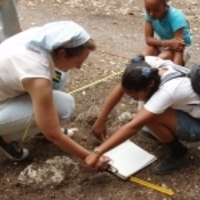2016 Intl IEEE Conferences on Ubiquitous Intelligence & Computing, Advanced and Trusted Computing, Scalable Computing and Communications, Cloud and Big Data Computing, Internet of People, and Smart World Congress (UIC/ATC/ScalCom/CBDCom/IoP/SmartWorld), 2016
Many-core architectures trade single-thread performance for a larger number of cores. Scalable th... more Many-core architectures trade single-thread performance for a larger number of cores. Scalable throughput can be attained only by a high degree of parallelism, minimized synchronization. Whilst this is achievable for many applications, the operating system still introduces bottlenecks through non-local sharing, synchronization,, message passing. A particular challenge for highly dynamic applications, for example invasive HPC applications, elastic compute clouds, is the management of short-living application threads, processes. This paper discusses OS architecture choices based on microkernel, multikernel, distributed systems designs, our development experience in the context of the MyThOS project. Initial experiments show a much faster thread creation, activation compared to monolithic systems like Linux while providing a more flexible protection, threading model that is better suited for dynamic scenarios. However, despite significant progress in the overall domain of operating systems, the design space for scalable many-core operating systems is yet to be fully explored.











Uploads
Papers by Lutz Schubert
We propose and discuss different approaches to align the 3d model with the profile data. Obviously, the model will fail to reproduce any irregularities that were not recorded by the excavators, but we will show how geological information can be taken into consideration to improve the regular(!) properties of the stratigraphic layout, even without further information given. The paper discusses whether such models are sufficient for archaeological discussions with a particular reference to site occupation and usage.
Full paper to be published